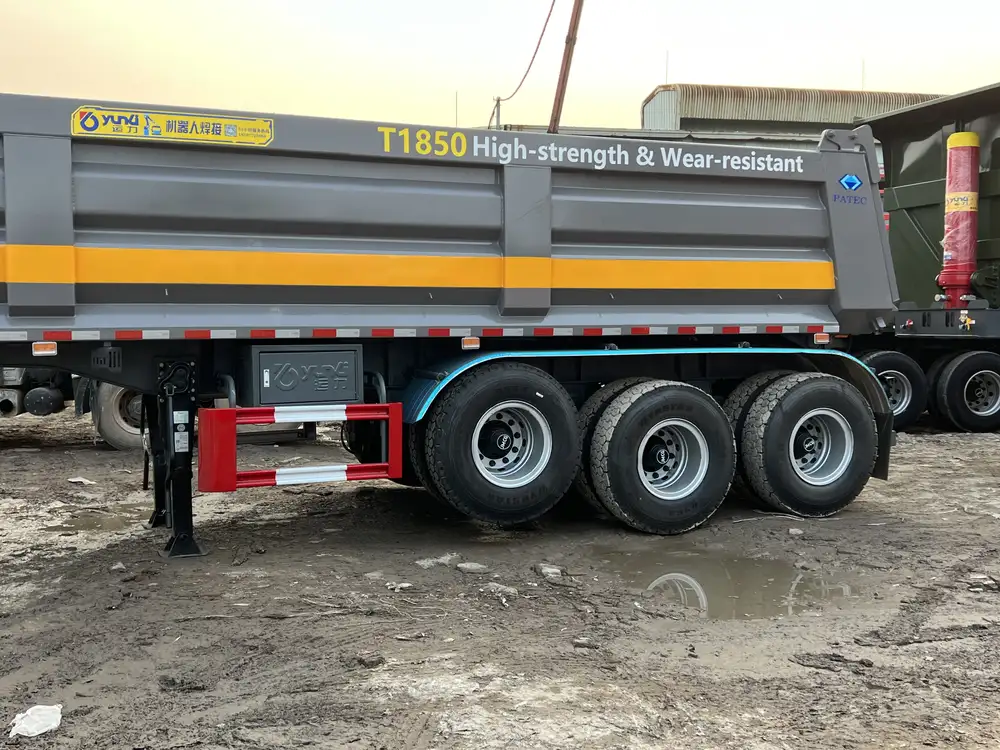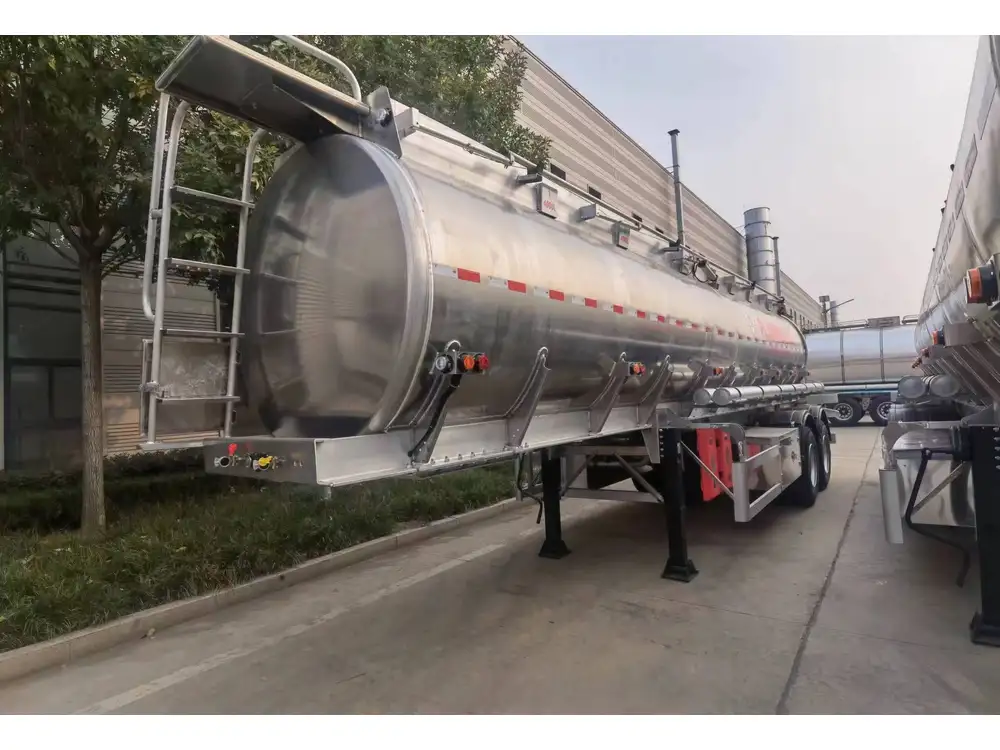In the intricate world of transportation and logistics, identifying the right trailer type can significantly impact operations, efficiency, and overall costs. Two of the most popular choices for heavy-duty hauling are dump trailers and flatbed trailers. Each has unique features, benefits, and considerations that can influence your decision. Here, we will dissect these two trailer types, compare their functionalities, and ultimately guide you toward making an informed choice.
Understanding Dump Trailers
Definition and Functionality
Dump trailers are specialized vehicles designed for transporting bulk materials. They are equipped with a hydraulic lift that tilts the bed of the trailer, allowing for easy unloading of contents. This feature makes them particularly suitable for construction, landscaping, and agricultural industries where heavy materials like sand, gravel, or mulch need to be transported and subsequently discharged.

Key Features of Dump Trailers
- Hydraulic Lifting Mechanism: The primary feature is its hydraulic system, which elevates the trailer bed to facilitate dumping.
- Load Capacity: Most dump trailers can handle significant weight, typically ranging from 10,000 to 14,000 pounds.
- Material Construction: Dump trailers are primarily made of steel or aluminum, providing solid durability and resisting wear and tear.
Advantages of Dump Trailers
- Efficient Unloading: The hydraulic system allows for rapid unloading, which can save time on job sites.
- Versatile Use: Can be used to transport a variety of loose materials, suitable for multiple industries.
- Stability: Low center of gravity provides enhanced stability while carrying heavy loads.
Typical Applications
- Construction sites for debris removal.
- Landscaping companies for carrying soil and stone.
- Agricultural fields for moving feed or fertilizer.

Exploring Flatbed Trailers
Definition and Functionality
Flatbed trailers are open trailers with no sides or roof, designed for transporting large or irregularly shaped cargo that doesn’t fit well in enclosed spaces. They are widely used across various industries due to their versatility.
Key Features of Flatbed Trailers
- Open Design: This allows for easy loading and unloading from all sides.
- Varied Sizes: Flatbeds come in a multitude of lengths and widths, accommodating a broad range of cargo.
- Flexibility: They can carry anything from heavy machinery to large building materials.

Advantages of Flatbed Trailers
- Easy Loading & Unloading: The open design permits the use of cranes and forklifts from any direction.
- Versatile Cargo Handling: Ideal for transporting oversized items, making them necessary in construction and heavy machinery industries.
- Durability: Built to withstand heavy loads and designed to last, often made from robust steel or aluminum.
Typical Applications
- Transporting construction equipment such as bulldozers and excavators.
- Outstanding for large lumber deliveries.
- Used in the transport of shipping containers.
A Detailed Comparison: Dump vs. Flatbed Trailers
| Feature | Dump Trailers | Flatbed Trailers |
|---|---|---|
| Design | Enclosed container with tilting mechanism | Open platform without sides or roof |
| Loading/Unloading | Hydraulic lift for fast dumping | Flexible with loading/unloading from any side |
| Cargo Types | Loose materials (gravel, soil, etc.) | Large, bulky items (machinery, lumber, etc.) |
| Weight Limit | Typically 10,000 to 14,000 pounds | Generally supports more extensive weight limits |
| Versatility | Limited to specific materials | High versatility for various cargo types |
| Operational Costs | Higher maintenance due to hydraulic systems | Relatively lower maintenance costs |

When to Choose Dump Trailers?
Choosing a dump trailer is preferable when your operations frequently involve transporting loose materials or when quick unloading is a priority. Here are some specific scenarios where dump trailers shine:
- Projects requiring regular delivery and disposal of debris.
- Situations demanding high frequency of material turnover, as seen in mining or landscaping operations.
When to Opt for Flatbed Trailers?
In contrast, flatbed trailers are ideal when transporting oversized or heavy loads where the nature of the cargo doesn’t allow for the use of enclosed trailers. Ideal situations for flatbed use include:
- Delivering heavy equipment that can be easily loaded via a crane or forklift.
- Transporting materials that require unrestricted access on all sides for loading and unloading.
Commonly Asked Questions About Dump and Flatbed Trailers

1. How do I determine the right trailer for my needs?
Assess your primary cargo type, required loading/unloading efficiency, and whether hydraulic functions are necessary. If your work revolves around loose materials, a dump trailer is optimal. However, if versatility is paramount, flatbeds typically offer broader applications.
2. What are the maintenance considerations for dump and flatbed trailers?
Dump trailers require regular checks on the hydraulic system to ensure operational efficiency, while flatbeds necessitate inspections on tie-downs and general integrity to manage heavy loads effectively.
3. Can I modify a trailer to serve as both dump and flatbed?
While conversion can be costly and complex, some manufacturers offer dual-purpose trailers. However, carefully consider the trade-offs in ability and efficiency in doing so, as the two designs cater to fundamentally different purposes.

4. What is the average cost for each trailer type?
The cost of dump trailers typically ranges from $5,000 to $15,000, depending on size and feature complexity, whereas flatbed trailers usually span $4,000 to $12,000. Always account for additional equipment such as tie-downs or hydraulic systems when budget planning.
Final Considerations
When it comes to deciding which trailer is “better,” it ultimately hinges on your specific business needs and operational demands. Each trailer type shines under different circumstances, and the right choice will enhance productivity, streamline operations, and ultimately lead to a significant reduction in transportation costs.
Making the Decision: Key Takeaways
- Evaluate Your Cargo: Analyze the type and size of materials you regularly transport.
- Consider Efficiency: Determine how important quick unloading is to your processes.
- Safety Standards: Factor in the safety features and compliance regulations of each trailer type.

Conclusion
In the realm of trailers, both dump and flatbed options present distinct advantages tailored to their unique functionalities. By understanding their differences, advantages, and operational applications, stakeholders can make smarter investments that align with their logistical needs. Balancing efficiency, cost, and utility will enable your operations to flourish—choosing the right trailer is instrumental in this continual pursuit.
By weighing these vital details, you are better equipped to decide which trailer aligns seamlessly with your operational goals. Whether you settle on a dump trailer or a flatbed trailer, rest assured that your choice can pave the way for optimized transportation solutions in an increasingly competitive environment.



